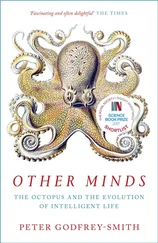The second millennium was still in its early centuries when a series of Amurru princes ruled the whole Fertile Crescent from the Persian Gulf to the Nile and, as "Hyksos," were beginning to force their way into Egypt. Amorite names like Abram, Jacob, and Benjamin were recorded in cuneiform writing for the whole area. Tribal or family influence was still so powerful in most places that individual rights were very weak, and a strong family group was a better guarantee of personal safety or of individual rights than either personal prowess or princely power.
In this rapidly developing society there were scattered persons whom the documents called "Habiru" or some similar term. They are recorded from Mesopotamia, Asia Minor, Egypt, and the Levant. The meaning of the term Habiru is disputed, but it seems to apply to persons whose social position did not provide them with the protection of blood relatives and of the threat of retaliatory feuding by their families. They were, what Maitland called in the early Middle Ages in England, "landless and kin-shattered men." The cause of this "kin-shattered" condition which left the Habiru in a precarious social condition is fairly clear. Any individual who had killed a member of his own family obviously lost the protection of that family and became socially isolated. Or again, any person who had made a formal agreement to become the bondsman of another had voluntarily renounced the protection of his blood relatives. Similarly, men who bound themselves to fight for money could not expect their families to stand by prepared to avenge any injuries they might suffer in their combats. Such persons, without family to protect them or to force the prince to extend his protection, needed some other protector. This was found by seeking the favor of Yahveh, the God of mercy, one of the lesser deities in the numerous Canaanite pantheon. Such allegiance to Yahveh by bondsmen, murderers, or other "kin-shattered" persons did not originally imply any renunciation of the other deities in the Canaanite pantheon, and the Habiru continued to worship, as seemed fit, the other Canaanite Baals, working downward from the greatest, El, God of justice and Creator of the world.
The economic activities of these Habiru were probably not much different from those of other Canaanites. But two comments might be made. As persons with weak or no kinship ties they probably wandered about from place to place more readily than other Canaanites. And there clearly seems to be, among the Habiru, a large proportion of wandering metalworkers and musicmakers. Some of these metalworkers were known as Kenites, a name traditionally derived from Cain, the son of Adam. It is worth noting that the mark the Lord put upon Cain was not a mark of damnation, as some believe, but a mark of protection: "the Lord put a mark on Cain, lest any who came upon him should kill him."
It would appear thus that the Habiru who became the worshipers of Yahveh and later strict monotheists began as a legal or social group, later (at the time of Moses) became a religious group, and still later (at the time of Joshua) began to develop into a political group. Much later, after the Assyrian destruction of the Hebrew state, they became, once more, primarily a religious group, although there always were tendencies to become a political group (by establishing Hebrew rule in some area) or to become a biological group (by insisting on endogamy). At any rate the Hebrews always were a group within Canaanite society and never became a society of their own.
2. Gestation
Because the process of mixture continued so long in Canaanite civilization, probably because of the very exposed geographic position of the Levant, we cannot fix any rigid date when mixture ended and gestation began. There was rather a series of advances and relapses not only in regard to these two stages but possibly in regard to the next as well. Moreover, the instrument of expansion we have posited for this society, commercial capitalism, is one in which there is no great interval between accumulation of surplus, plowing of this surplus back into the business, and increase of output arising from such investment. This process undoubtedly existed among the Canaanites at an early date in the second millennium, but it seems clear that the Levant was too closely dominated by Egyptian and Hittite influences for us to attribute much of its social dynamics to Canaanite organization until fairly well along in that second millennium. By 1300 Egyptian power was in full retreat from the Levant, and a century later the Hittite Empire was breaking up under the blows of the Iron Age invaders. At that point, about 1200, the period of expansion of Canaanite society was beginning.
3. Expansion
The period of expansion of Canaanite society began as the withdrawal of Egyptian and Hittite influence and the absorption of Hurrian and Mitanni peoples allowed this new commercial society to emerge. At that time, we find a threefold situation: the Canaanite pagans in control of the southern Levant were being squeezed between the Philistines coming in from the sea to the west and the Hebrews coming in from the desert to the east.
The Canaanite pagans in this period were to be found not only in Palestine but also in Syria, where they were already engaged in the Levantine trading activities we associate with the Phoenicians. In fact, they were early Phoenicians, although historians usually call them by the names of their respective cities. Of these cities the best known are probably Ras Shamra and Alalakh in northern Syria. The archaeological evidence from these, especially from Ras Shamra (the ancient Ugarit), shows a flourishing trade going on between Mesopotamia and the Mediterranean peoples, particularly the Mycenaeans from 1700 to 1200. It is clear that the period of expansion, in this area at least, was in full swing before the fourteenth century B.C. By the end of that century pressure from the Hittites and the damage caused by the great earthquake of about 1365 B.C., had hampered these more northern seaports and provided an opportunity for more southern seaports such as Byblos, Sidon, and Tyre to break into the western trade. It was these Phoenician cities that took Canaanite commerce through the Age of Expansion.
While these developments were occurring in the north the Hebrew peoples were forming in the south. Some Habiru had accompanied the Hyksos into Egypt in the eighteenth century B.C. When these "Shepherd Peoples" were expelled from Egypt by Ahmose I about 1567, many of the Habiru remained, working as copper miners and coppersmiths in Sinai or as bondsmen and mercenary soldiers in Egypt itself. In time, Egyption rule over these peoples became increasingly oppressive. About 1300 a man with the Egyptian name of Moses killed an Egyptian and had to flee into the eastern deserts beyond Sinai. There he became acquainted with Yahveh, married the daughter of the Midianite priest of Yahveh, and returned to Egypt to lead the Habiru to safety. Instead of following the regular coast road from Egypt to Canaan, Moses led his followers eastward into the desert. After the revelation on Mount Sinai and the death of Moses, the new leader, Joshua, led the Hebrews into Canaan by making a wide swing into the desert to the east. The invaders sacked the Canaanite city of Jericho, which guarded the approach road from the east (about 1230) but were unable to cross the hills down into the western plains where the Canaanite war chariots were still undefeated. The new invention of lime-plastered cisterns for catching rain made it possible for the Israelites to expand along the hitherto unoccupied hills above the Canaanite-controlled springs and streams. Eventually the Canaanites were absorbed between the Hebrew pressure from the eastern hills and the seaborne invasions of the Philistines from the west (1200-1000), but the basic character of Canaanite culture was not greatly changed. There was a good deal of mutual assimilation and agricultural resettlement, but the chief changes were the acquisition by the Hebrews of agriculture with iron tools and weapons. By 1000 B.C. the chief distinction between Hebrews and Canaanites was religious, the former slowly abandoning the old, bloodthirsty Canaanite gods in favor of a supreme God of mercy and justice as a result of Moses' covenant from Mount Sinai. Even this was a slow process, and for many centuries persons who called themselves Hebrews, including the well-known kings of Israel, lapsed into polytheistic acts.
Читать дальше










